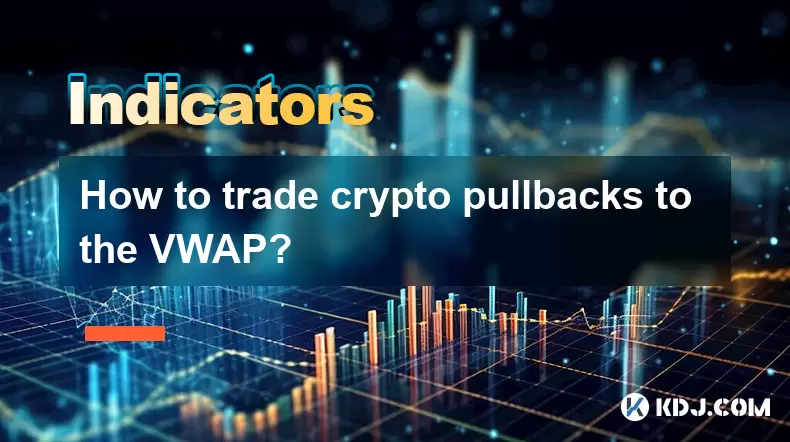-
 Bitcoin
Bitcoin $118100
0.44% -
 Ethereum
Ethereum $3765
5.84% -
 XRP
XRP $3.498
3.12% -
 Tether USDt
Tether USDt $1.000
0.00% -
 BNB
BNB $753.2
3.41% -
 Solana
Solana $181.7
3.58% -
 USDC
USDC $0.9999
0.01% -
 Dogecoin
Dogecoin $0.2704
12.75% -
 Cardano
Cardano $0.8684
5.85% -
 TRON
TRON $0.3151
-0.86% -
 Hyperliquid
Hyperliquid $46.06
4.51% -
 Stellar
Stellar $0.4695
2.48% -
 Sui
Sui $3.910
3.18% -
 Chainlink
Chainlink $19.36
6.65% -
 Hedera
Hedera $0.2750
3.99% -
 Bitcoin Cash
Bitcoin Cash $544.6
6.31% -
 Avalanche
Avalanche $25.12
3.69% -
 Shiba Inu
Shiba Inu $0.00001559
5.40% -
 Litecoin
Litecoin $116.8
5.10% -
 UNUS SED LEO
UNUS SED LEO $8.991
0.05% -
 Toncoin
Toncoin $3.283
2.79% -
 Polkadot
Polkadot $4.509
3.97% -
 Uniswap
Uniswap $10.67
6.58% -
 Ethena USDe
Ethena USDe $1.001
-0.01% -
 Monero
Monero $323.2
0.48% -
 Pepe
Pepe $0.00001410
6.37% -
 Bitget Token
Bitget Token $4.964
1.93% -
 Dai
Dai $0.9998
-0.01% -
 Aave
Aave $326.2
3.85% -
 Bittensor
Bittensor $421.8
2.46%
How to trade crypto pullbacks to the VWAP?
VWAP helps crypto traders identify dynamic support/resistance levels, offering strategic entry points during pullbacks in trending markets.
Jul 17, 2025 at 05:14 pm

Understanding VWAP and Its Role in Crypto Trading
VWAP, or Volume Weighted Average Price, is a technical indicator used by traders to determine the average price of an asset based on both volume and price. It plays a significant role in cryptocurrency trading due to the high volatility and liquidity fluctuations inherent in digital assets. In crypto markets, VWAP acts as a dynamic support/resistance level, helping traders identify potential entry points when prices pull back.
Unlike traditional moving averages, VWAP gives more weight to periods with higher trading volume, making it more reliable during strong market moves. When the price of a cryptocurrency pulls back to the VWAP line, especially during an uptrend or downtrend, it often presents a favorable opportunity for traders to enter trades in the direction of the trend.
Identifying Pullbacks in the Context of VWAP
A pullback refers to a temporary reversal in the direction of an asset’s price movement before it continues along its prevailing trend. In the context of VWAP-based trading, identifying a pullback means looking for moments when the price dips toward or slightly below the VWAP line in an uptrend or rises toward or slightly above it in a downtrend.
To spot such opportunities:
- Use VWAP alongside other tools like EMA (Exponential Moving Average) to confirm trends.
- Monitor volume spikes that occur during the pullback — increased volume can validate the strength of the trend.
- Look for candlestick patterns near the VWAP line, such as bullish engulfing or hammer patterns, which may signal a reversal of the pullback.
When these conditions align, it suggests that the pullback might be ending, offering a strategic entry point.
Setting Up Your Chart for VWAP-Based Pullback Trading
Before you begin trading pullbacks using VWAP, ensure your chart setup supports accurate analysis. Most modern trading platforms like TradingView, Binance, or Bybit offer VWAP indicators.
Here's how to set up your chart:
- Add the VWAP indicator from the platform’s list of available tools.
- Overlay trendlines or moving averages (like 20 EMA) to help visualize the overall trend.
- Apply volume bars beneath the price chart to monitor volume behavior during pullbacks.
Use multiple timeframes for confirmation. For example, if you're trading on the 1-hour chart, check the 4-hour chart to understand the broader trend. This multi-timeframe approach helps avoid false signals and improves the probability of successful entries.
Executing Trades Based on VWAP Pullbacks
Once a valid pullback is identified, it's time to execute the trade. The key here is to wait for confirmation that the pullback is likely ending. Here are steps to follow:
- Wait for the price to touch or closely approach the VWAP line.
- Confirm that volume increases as the price approaches VWAP, indicating interest from buyers or sellers.
- Watch for candlestick confirmation — a bullish or bearish pattern depending on the trend direction.
- Enter the trade after the candle closes above/below the VWAP line, depending on the direction of the trend.
For risk management:
- Place a stop-loss order just beyond the recent swing low/high.
- Set a take-profit target at a previous resistance/support level or use a trailing stop to maximize gains.
Avoid entering too early; patience is crucial in this strategy. Entering prematurely can result in losses if the pullback extends further than expected.
Backtesting and Refining Your VWAP Pullback Strategy
Before deploying real capital, it's essential to test your VWAP pullback strategy across historical data. Backtesting allows you to evaluate the effectiveness of your rules and refine them accordingly.
Steps to perform effective backtesting:
- Select a variety of crypto pairs and timeframes to see how the strategy performs under different conditions.
- Use trading journals or software tools to log each trade, including entry, exit, and reason for the trade.
- Analyze win/loss ratios and adjust parameters like stop-loss placement or entry confirmation criteria.
Keep in mind that past performance doesn't guarantee future results, but consistent positive outcomes during testing can increase confidence in live trading.
Refinement should focus on eliminating weak signals, improving timing, and enhancing risk-reward ratios. Continuously review your trades and update your strategy based on new market behaviors.
Frequently Asked Questions
Q: Can VWAP be used effectively on lower timeframes like 5-minute or 15-minute charts?
Yes, VWAP works well on lower timeframes, especially for scalping or intraday trading. However, it becomes more prone to noise and false signals compared to higher timeframes. Traders should combine it with volume filters or other confirming indicators.
Q: How does VWAP differ from a simple moving average in pullback trading?
VWAP accounts for volume, giving more weight to price levels where more trading activity occurred. A simple moving average treats all data points equally over a period. Therefore, VWAP offers a more accurate reflection of true market sentiment during pullbacks.
Q: Should I reset the VWAP indicator daily or keep it on a longer timeframe?
This depends on your trading style. Intraday traders typically reset VWAP at the start of each session to reflect current market conditions. Longer-term traders may leave it running continuously. Both approaches have merit, so test both and choose what aligns with your strategy.
Q: Is VWAP suitable for sideways or ranging markets?
VWAP is less effective in ranging markets because it was designed for trending environments. In sideways conditions, prices oscillate without clear direction, causing frequent false crossings of the VWAP line. Consider combining VWAP with range-bound indicators like RSI or Bollinger Bands for better accuracy.
Disclaimer:info@kdj.com
The information provided is not trading advice. kdj.com does not assume any responsibility for any investments made based on the information provided in this article. Cryptocurrencies are highly volatile and it is highly recommended that you invest with caution after thorough research!
If you believe that the content used on this website infringes your copyright, please contact us immediately (info@kdj.com) and we will delete it promptly.
- NFT Performers in Flux: Pudgy Penguins, Courtyard, and the Shifting Sands of the Market
- 2025-07-21 10:30:12
- Decoding HKMA's Stablecoin Licensing System: A New Era for Digital Assets?
- 2025-07-21 10:50:11
- Address, CryptoPunks, NFTs: What's the Buzz?
- 2025-07-21 10:50:11
- Ethereum, Crypto, and Market Moves: What's the Deal?
- 2025-07-21 11:30:11
- CoinDCX Hack: A Wake-Up Call for Crypto Security
- 2025-07-21 11:35:12
- Dogecoin & Meme Coins in 2025: Hype or Hyper-Growth?
- 2025-07-21 08:30:12
Related knowledge

Advanced RSI strategies for crypto
Jul 13,2025 at 11:01am
Understanding the Basics of RSI in Cryptocurrency TradingThe Relative Strength Index (RSI) is a momentum oscillator used to measure the speed and chan...

Crypto RSI for day trading
Jul 12,2025 at 11:14am
Understanding RSI in the Context of Cryptocurrency TradingThe Relative Strength Index (RSI) is a momentum oscillator used to measure the speed and cha...

Crypto RSI for scalping
Jul 12,2025 at 11:00pm
Understanding RSI in the Context of Crypto TradingThe Relative Strength Index (RSI) is a momentum oscillator widely used by traders to measure the spe...

What does an RSI of 30 mean in crypto
Jul 15,2025 at 07:07pm
Understanding RSI in Cryptocurrency TradingRelative Strength Index (RSI) is a momentum oscillator widely used in cryptocurrency trading to measure the...

What does an RSI of 70 mean in crypto
Jul 13,2025 at 06:07pm
Understanding the RSI Indicator in Cryptocurrency TradingThe Relative Strength Index (RSI) is a widely used technical analysis tool that helps traders...

Does RSI work in a bear market for crypto
Jul 16,2025 at 01:36pm
Understanding RSI in Cryptocurrency TradingThe Relative Strength Index (RSI) is a momentum oscillator used by traders to measure the speed and change ...

Advanced RSI strategies for crypto
Jul 13,2025 at 11:01am
Understanding the Basics of RSI in Cryptocurrency TradingThe Relative Strength Index (RSI) is a momentum oscillator used to measure the speed and chan...

Crypto RSI for day trading
Jul 12,2025 at 11:14am
Understanding RSI in the Context of Cryptocurrency TradingThe Relative Strength Index (RSI) is a momentum oscillator used to measure the speed and cha...

Crypto RSI for scalping
Jul 12,2025 at 11:00pm
Understanding RSI in the Context of Crypto TradingThe Relative Strength Index (RSI) is a momentum oscillator widely used by traders to measure the spe...

What does an RSI of 30 mean in crypto
Jul 15,2025 at 07:07pm
Understanding RSI in Cryptocurrency TradingRelative Strength Index (RSI) is a momentum oscillator widely used in cryptocurrency trading to measure the...

What does an RSI of 70 mean in crypto
Jul 13,2025 at 06:07pm
Understanding the RSI Indicator in Cryptocurrency TradingThe Relative Strength Index (RSI) is a widely used technical analysis tool that helps traders...

Does RSI work in a bear market for crypto
Jul 16,2025 at 01:36pm
Understanding RSI in Cryptocurrency TradingThe Relative Strength Index (RSI) is a momentum oscillator used by traders to measure the speed and change ...
See all articles

























































































